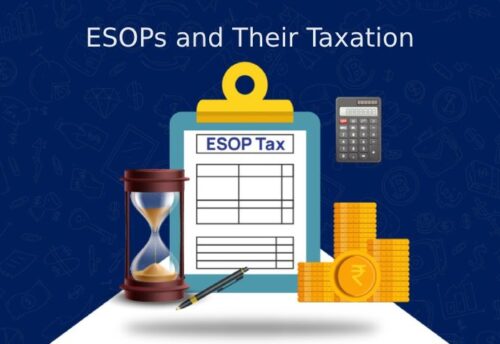
- 10/01/2025
- MyFinanceGyan
- 162 Views
- 8 Likes
- Finance, Investment
Retirement Income Strategies: Maximizing Your Golden Years
Life is often described as a journey, shaped by financial decisions. This perspective highlights the importance of planning for each phase, especially post-retirement. Discover effective Retirement Income Strategies to ensure financial independence and a secure future in your golden years
Understanding the Financial Phases of Life:
Our financial journey can be categorized into three distinct phases based on consumption patterns:
- Consumption-Only Phase (Childhood): From birth until earning your first income, you rely entirely on others for your needs.
- Earning and Consumption Phase (Working Years): Starting from your first job until retirement, this phase involves earning, spending, and ideally saving for the future.
- Consumption-Only Phase (Retirement): After retiring, your expenses are met through the resources accumulated during your working years.
This third phase, retirement, presents unique challenges. It requires a carefully planned strategy to ensure your accumulated corpus lasts throughout your life while providing a regular income for day-to-day needs.
Key Considerations in the Post-Retirement Phase:
In retirement, the following factors are vital when selecting investment products:
- Liquidity: How easily can you access funds when needed?
- Risk: What is the likelihood of losing your invested capital?
- Returns: Will the returns from your investments sustain your lifestyle without depleting your savings?
- Tax Efficiency: How much of your income will be reduced by taxes?
- Maintenance Costs: Are there additional costs associated with holding the investment?
- Initial Capital Requirement: What is the minimum amount needed to start investing?
Investment Options for Retirement Income:
Here are three broad categories of investment products to consider:
Fixed Income with Low or No Capital Growth
Examples: Fixed Deposits, Senior Citizen Savings Schemes, Post Office Monthly Income Schemes, Immediate Annuity Plans, Pradhan Mantri Vaya Vandana Yojana, Bonds, and Debentures.
- Liquidity: High, though early withdrawals may incur penalties.
- Risk: Low risk of capital loss but vulnerable to reinvestment risks.
- Returns: Generally lower than inflation, leading to potential erosion of purchasing power.
- Tax Efficiency: Income is taxed as per applicable tax slabs.
- Maintenance Costs:
- Initial Capital: Can start with small investments.
- Fixed Income with Growth and Capital Appreciation
Examples: Residential and Commercial Properties.
- Liquidity: Low, as selling properties takes time and cannot be done partially.
- Risk: Low over the long term but dependent on consistent rental income.
- Returns: Rental yields can be low; capital appreciation may take years.
- Tax Efficiency: Rental income and sale profits are taxable.
- Maintenance Costs: High due to upkeep and repairs.
- Initial Capital: Requires significant initial investment.
- High Capital Growth with Irregular or No Fixed Income
Examples: Stocks and Equity Mutual Funds.
- Liquidity: High, with partial withdrawals possible (may incur exit loads).
- Risk: High volatility and potential for short-term losses.
- Returns: Historically, equity investments outperform inflation over the long term, offering positive real returns.
- Tax Efficiency: Tax–efficient with fixed rates on capital gains, but dividends above a threshold are taxable.
- Maintenance Costs:
- Initial Capital: Can start with small amounts.
Optimizing Retirement Income: The Asset Allocation Approach:
Relying solely on one investment category may not meet all your retirement needs. A diversified portfolio that balances risk, returns, and liquidity is essential. One effective strategy is the Three Buckets Approach:
Bucket 1: Regular Income Provision
- Purpose: Cover monthly expenses.
- Investment Products: Liquid Debt Mutual Funds, Fixed Deposits.
- Duration: Maintain funds for 3 years’ worth of expenses.
Bucket 2: Emergency Corpus and Additional Debt Allocation
- Purpose: Serve as a financial cushion for unexpected events.
- Investment Products: Low to Short Duration Debt Mutual Funds, Bonds.
- Allocation: Balance debt portion adjusted for Bucket 1 provisions.
Bucket 3: Long-Term Growth
- Purpose: Ensure portfolio sustenance through capital appreciation.
- Investment Products: Equity Mutual Funds, Stocks.
- Allocation: Align with your risk tolerance and financial goals.
Every year, funds from Buckets 2 and 3 replenish Bucket 1, ensuring steady income while preserving long-term growth potential. This strategy also allows for adjustments based on your financial situation.
Conclusion:
In the post-retirement phase, liquidity and long-term sustainability are paramount. By adopting a diversified asset allocation strategy, you can secure a stable income, manage risks, and enjoy peace of mind during your golden years. Plan wisely and let your retirement be a time of relaxation, free from financial worries.
Disclaimer: The views expressed in this article are for educational purposes only and do not constitute financial advice or product recommendations.



